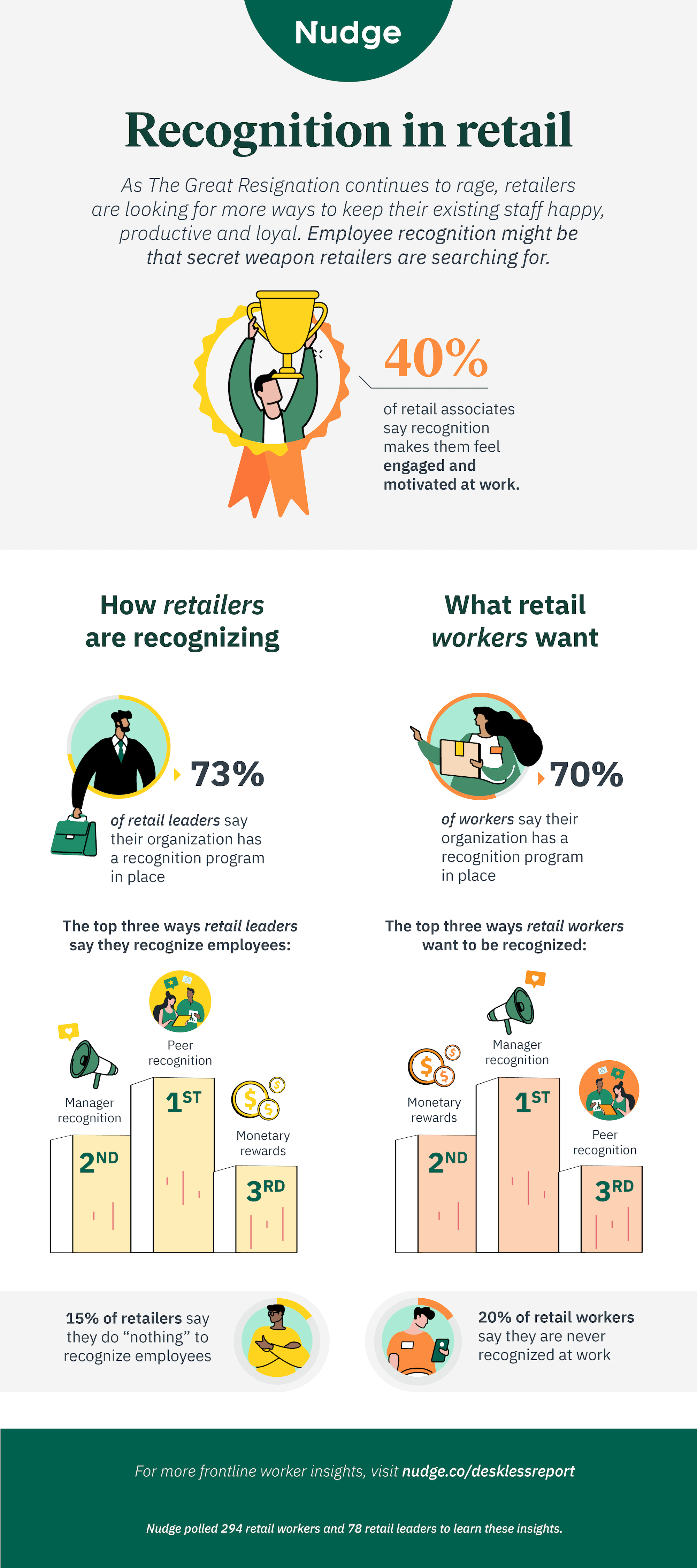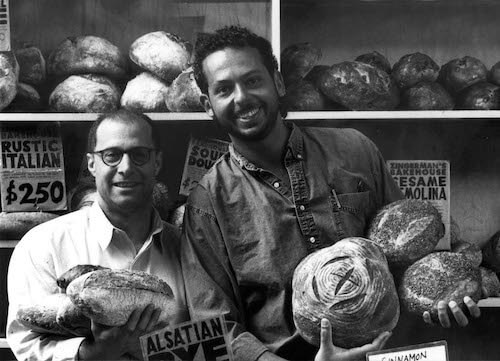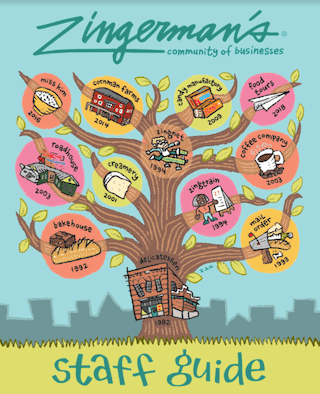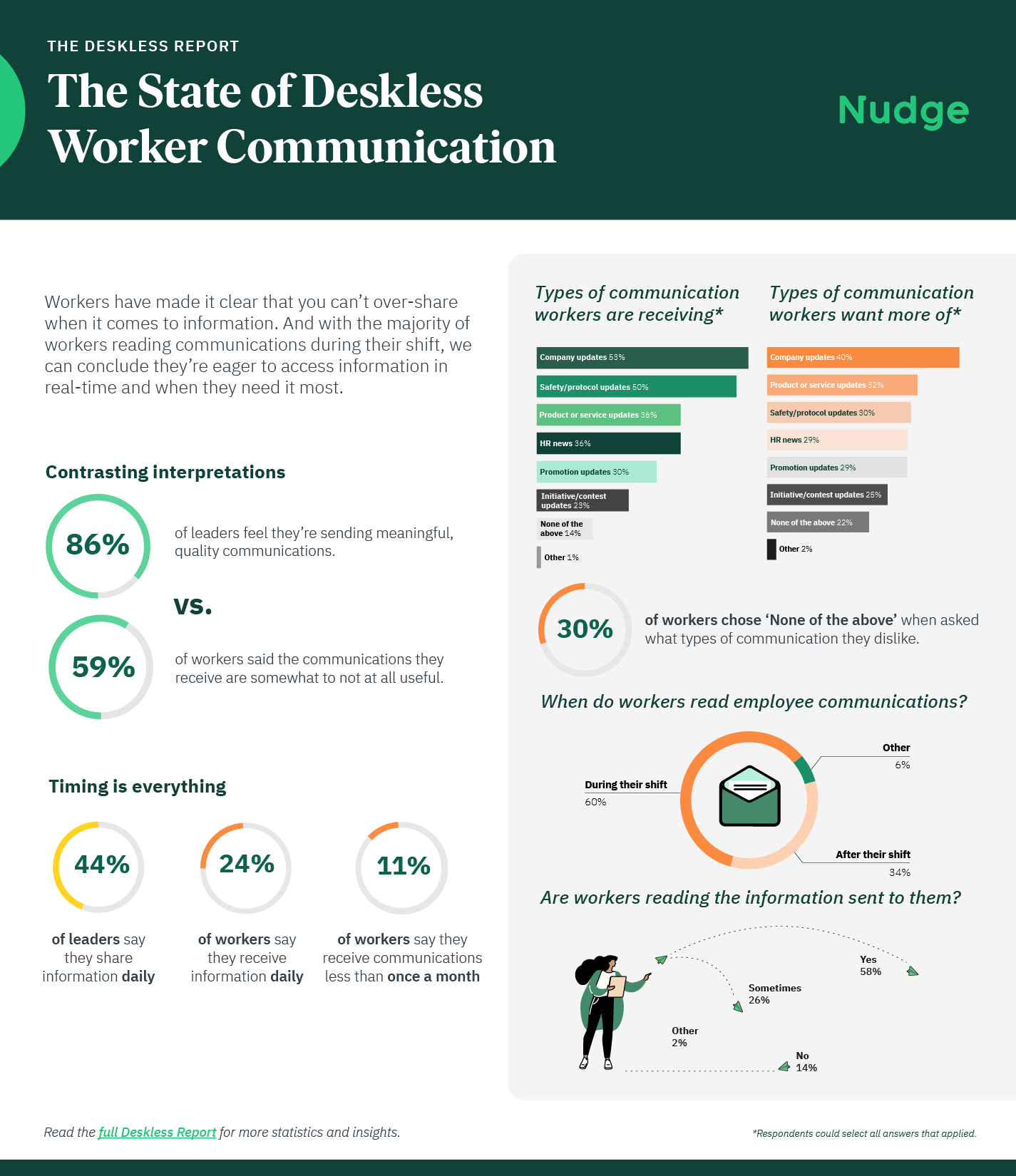
8 examples of amazing internal communications for the frontline
Sharing employee communications with thousands – or even hundreds of thousands – of frontline workers isn’t easy. But it’s definitely worth it. Communicating with your workforce boosts engagement, reduces turnover, and improves workplace safety. Internal communications can culturally inspire your workforce; they can increase sales, improve customer and guest experience, and create a two-way line of feedback that ensures great ideas find their way back up to the top.
You get it – internal communications are great for your business. But what do great frontline communications look like? We’ve rounded up 8 internal communication examples, each with an actionable takeaway you can use to take your own internal communications to the next level.
Here are eight amazing internal communication examples to inspire your frontline communications:
1. Golf Town sends real-time sports updates to their frontline workers
When you’re a golf retailer, you can expect your customers to show a certain level of passion about, well, golf. So it goes without saying that your associates should be matching that passion.
Case in point: Canadian golf retailer Golf Town. During the PGA tour and other tournaments, Golf Town sends real-time updates on the events to their employees, and even uses surveys to have their team guess who is going to take the trophy. This is a perfect internal communication example for culturally inspiring a workforce. By ensuring their staff is up-to-date on relevant events, Golf Town is empowering staff to have quality conversations with the seasoned golf experts coming into the store.
Example takeaway: Not all internal communications need to be training and protocol sharing. Once you have a direct connection to your frontline workers, you can use it to culturally inspire – and improve the customer experience as a result.
2. Zara replaces trend forecasts with employee insights
It’s never been more important for organizations to be agile and nimble, as the pandemic has thrown traditional shopping seasons and cycles out the window. For years, Spanish apparel retailer Zara has been hailed for its ability to adapt to rapidly-changing trends through shorter lead times and a super-efficient supply chain. But a core component of that process is empowering its retail associates to stay closely tuned in to customers’ needs.
“Zara empowers its sales associates and store managers to be at the forefront of customer research – they intently listen and note down customer comments, ideas for cuts, fabrics or a new line, and keenly observe new styles that its customers are wearing that have the potential to be converted into unique Zara styles,” explains brand strategist Martin Roll. “Traditional daily sales reports can hardly provide such a dynamic updated picture of the market.”
Example takeaway: While this isn’t exactly an example of frontline communication in the traditional sense, it showcases the importance of a multi-directional internal communication strategy. It’s important for organizations to connect with its frontline workers – but it’s equally important for that channel to work in reverse, giving employees an opportunity to share ideas, insights and feedback, right from the frontline.
3. Coca-Cola gives frontline employees extra insight through podcasting
“We are pulling back the curtain and turning internal communications inside out,” explains the description for Total Refresh, Coca-Cola‘s podcast “for employees, by employees and available to everyone.”
In the episodes, the two hosts (Coca-Cola employees, of course) interview leaders from across the company, offering a more humanized approach to senior leadership and giving their employees (their 700,000+ workforce includes warehouse staff and other supply chain teams around the world) a more unfiltered view of the company’s vision and evolution.
“Together, they engage in refreshingly honest conversations about navigating big changes – cultural, personal and professional – and how all Coca-Cola North America employees can apply this same growth mindset on our journey to becoming a Total Beverage Company,” explains the podcast.
Example takeaway: To really connect with your employees, bring the conversation to communication platforms they’re already using – like podcasts (or mobile apps!).
4. Mastermind Toys stays agile in crisis with employee ideas
Not long after Mastermind Toys CEO Sarah Jordan joined the speciality toy retailer, the pandemic caused waves of lockdown, shopping restrictions, and uncertainty. That’s when Jordan turned to her frontline for ideas. The ideas included feedback on what became an industry-leading curbside pickup service – part of a massive “digital reinvention” – but they also included thoughts on how to iterate the brand’s offerings, like pandemic birthday party trends and turning the windows of closed retail locations into impulse aisles.
Mastermind Toys used Nudge (🎉) to open the lines of communication in both directions, ensuring staff were constantly in-the-loop on changing protocols and restrictions, but also giving associates a direct line back up to head office. “We want everyone to co-create with us,” says Jordan. “It has been so important to me to give employees a direct channel to ask questions, share concerns, and offer feedback.”
Example takeaway: The most impactful frontline communications go two-way. Make sure your staff has a way to share ideas and concerns directly with head office to ensure nothing gets lost or reinterpreted along the way.
5. Zingerman’s bakes trust and empowerment into their employee training
Deli-turned-speciality food empire Zingerman’s has spent decades building a stellar reputation for next-level customer service. How? By taking an approach to employee training that focuses on trust. “Most people want to do a good job. They want to make a contribution,” says Maggie Bayless, founding partner of ZingTrain, the training consultancy wing of Zingerman’s.
The training also focuses on concise “recipes”: simple guidelines for employee behavior or task execution. Think “3 Steps for Great Service” and “A Guide To Good Wastebusting” – easy-to-follow lists that make it easy for staff to know how to do their job well. “We try to always think about what it takes to help people be successful,” says Bayless.
Example takeaway: You can’t overshare. Giving your staff the support and information they need can have a huge impact on productivity, execution, and CX.
6. Jefferson Dental & Orthodontics gets playful with their internal communications
When COVID hit, Texas dental clinic chain Jefferson Dental & Orthodontics had to furlough 90% of its workforce. And when it reopened, it was with a surge of new protocols and safety procedures that the staff across 70-plus locations needed to know inside and out. At the same time, a cultural shift was happening within the company: new members of its executive team, a name change, and a renewed focus on the patient experience.
All of this led to a need to use frontline communications in a way that would be memorable and engaging. Using Nudge, Jefferson Dental & Orthodontics gets playful with short micro-communications, fun videos and imagery, and other multimedia communications. They do trivia events, weekly team highlights – even scavenger hunts. All of this is paired with an open feedback channel to continually check in with frontline workers to share stories and photos. This keeps engagement high, and in turn encourages knowledge retention of key procedural and protocol changes.
Example takeaway: Crucial communications don’t need to be dry. Making them fun and engaging can actually boost retention.
7. DHL goes multimedia to get a deeper connection
Multimedia internal communications might seem like a no-brainer for organizations looking to connect with desked employees. But it’s more challenging for deskless and frontline workers, where the usual intel comes from bulletin board posters or emails read out by managers.
Over the past year, global logistics brand DHL has focused on keeping a deep emotional connection with its hundreds of thousands of employees by sending video messages addressing key concerns and business updates. “It adds to a sense of inclusion and camaraderie, and keeps everyone on the same page,” explains Mike Parra, CEO of DHL Express Americas.
“Part of our message to employees revolves around what we call the three C’s, asking everyone during the current challenges to remain calm, confident and courageous.”
Example takeaway: Foster a more emotional, human connection with your frontline workers by using a variety of communication types and formats.
8. Dippin Dots creates an “organic communication trail” between franchise locations
A common issue facing franchised companies is the fragmented way communication is disseminated across the organization; often, franchise owners or general managers are already wearing many hats, and can easily become overwhelmed by the communication from head office that needs to be shared with their teams.
This was especially true in the past year, as COVID closings and subsequent reopenings made employee communication across franchise locations all the more crucial. Dippin’ Dots felt that pain. The ice cream brand implemented Nudge to relieve some of the pressure on its franchise owners, and one of the most impactful elements of their internal communication strategy was the ability for workers to communicate across locations.
“The power in the communication really comes not just from what myself or my team sends out – it’s actually when they start interacting with each other, region to region, store to store, different teams. And they say ‘Hey, I’m having an issue with this, how are you handling that?’ or ‘You know, I love this new flavor but nobody wants it – what could I do better?’ When you get them to share with each other, you get an organic communication trail that just seems to work even better,” explains Steve Rothenstein, Senior Director of Franchising for Dippin’ Dots and Doc Popcorn.
“It can’t be a bunch of papers that you send out and say, ‘OK, here’s your program.’ I think you need to do more than that.”
Example takeaway: Know that your frontline workers want to communicate and collaborate: your job is to implement internal communication tools that facilitate that to happen organically.
—
Finding ways to connect with your workforce is a challenge – but the benefits impact your business in myriad ways. These internal communication examples should give you some ideas of how to take your own frontline communication efforts to the next level.

![[Infographic] Employee recognition in retail](https://nudge.co/wp-content/uploads/2022/03/Employee-recognition-in-retail-Nudge-1080x675.jpg)


 “From the very beginning they wanted to create an organization where not only people wanted to come to shop, but people wanted to come to work,” says Bayless. “The employee experience has just always been a big piece of
“From the very beginning they wanted to create an organization where not only people wanted to come to shop, but people wanted to come to work,” says Bayless. “The employee experience has just always been a big piece of  As anyone who has read
As anyone who has read ![[INFOGRAPHIC] The state of deskless employee communication](https://nudge.co/wp-content/uploads/2022/01/INFOGRAPHIC-The-state-of-deskless-employee-communication-Nudge-1080x675.png)

